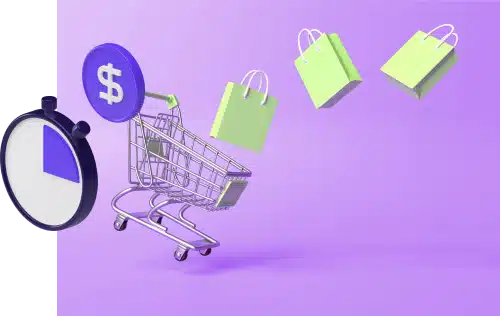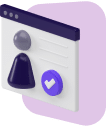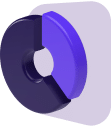Proper health care is essential for everyone.
Regardless of their income level, native language, or technical know-how.
CareMessage is working to improve health care for all through education and streamlined communication in the form of text messages.
CareMessage is a growing non-profit that helps healthcare organizations from big systems to small clinics use mobile technology to connect with underserved patients.
They aim to utilize mobile tech – like text messages – to provide patients with health-related information and ways to self-manage healthcare conditions under professional guidance.
How people communicate varies across demographics.
CareMessage assists providers in communicating relevant information to underserved patients through text messaging, which is the most commonly used tech for those in lower income brackets.
If patients don’t have the ability to text, CareMessage has an alternate voice messaging system that ensures essential messages are communicated.
Who are Underserved Patients?
According to the Health Resources and Services Administration of the U.S. government (HRSA), “underserved,” areas or populations are those that suffer from either having too few primary care services, high infant mortality rates, a high number of people below the poverty level, or a high number of elderly residents.
The current federal poverty level is $25,100 per year for a family of four.
For individuals, it is an annual income of $12,140 per year.
CareMessage bridges the gap between low income or elderly patients and available health services.
Statistics show that these populations have slower response times or are lacking in response when approached through email or postal mail.
Reaching these patients through text or voice messaging increases response rates and leads to more consistent healthcare gains.
Caring for underserved groups can be challenging due to the lack of perspective that caregivers have in the absence of communication, especially when trying to collect feedback from those patients.
CareMessage gives those patients a voice through surveys and polls to give caregivers a better understanding of patient needs.
Read on to learn about how you can become involved in this healthcare movement.
What is CareMessage?
CareMessage is a non-profit that is breaking down the barriers that keep people from accessing needed health care through a cloud-based messaging system.
Providers that use CareMessage improve communication with patients who might otherwise miss crucial information about their healthcare such as appointments, check up reminders, and more.
CareMessage is often used to send appointment reminders and information on health education programs.
Providers can also use the software to collect data or survey patients to understand their needs better.
Some providers create groups based on specific needs or demographics like age, condition, or health risks.
They can then participate in outreach to patient groups through automated messages sent to all group members.
CareMessage also helps providers manage data with patient data batch uploads to secure private clouds.
The most used function of CareMessage is text messaging.
According to CareMessage, text messaging yields a 98% open rate.
Email and patient portal open rates are far lower.
Sending automated messages that are opened saves healthcare administrators time.
It also replaces time wasted on phone calls, rescheduling, and other inefficient tasks.
This frees up provider staff to have more face to face interaction with patients.
CareMessage can help patients deal with any health issues and concerns they may have.
When patients stop missing essential communications from their providers, their healthcare experiences improve.
For instance, the messaging system encourages patients to schedule appointments.
That reduces the number of no-shows by making scheduling and remembering the appointment easier as well as reminding them to reschedule if there is a conflict.
Patients are also served through the ability to enroll in remote monitoring for blood glucose levels.
They also receive support in behavior change and weight loss, as well as information on how to increase disease management skills.
Patients show improved satisfaction with their healthcare as a result of increased relevant and timely messages from their providers.
CareMessage genuinely cares about social issues in healthcare.
With backing from Stanford University and a bevy of philanthropic investors, CareMessage got off the ground in 2012.
They have since been bolstered by further investment.
They also receive professional expert support from a scientific advisory board.
How Does CareMessage work?
CareMessage makes it easy for providers to implement the technology.
Once you have CareMessage setup, you use your patient data system to create and send text messages to individuals or groups of patients via CareMessage.
You can set up an automated program to send regularly scheduled texts regarding a specific patient concern such as diabetes management or a breast cancer screen.
CareMessage helps with data integration
CareMessage can work with or without EMR integration.
Data options include i2i Tracks, SFTP, Web-based file center, API, and HL7.
The team can also help you understand how CareMessage can work with your current system and existing workflow.
If your team finds that CareMessage isn’t the solution you need, they have reimbursement options.
How can you integrate CareMessage into your healthcare system?
You can contact CareMessage to start a demo or to get further answers to your questions about the software.
Use pre-written messages or personalize messages yourself
Not only do they provide a needed communications software, but they also help you craft those communications.
When you are ready to create messages, your system will prompt you to pick either a blank message (a screen on which you write a personalized message) or a template message provided by CareMessage, which are written by CareMessage staff experts.
The template messages are available in English and Spanish.
Each message is written below the 6th-grade reading level for optimum clarity and further reach.
CareMessage has plans to expand the number of languages available.
Here’s what you can expect when using CareMessage:
- Collect patient phone numbers – preferably their cell phone number, but be sure to at least obtain their landline number. The system will detect whether a number is a cell or landline to help you reach patients through voice messaging if texting isn’t available.
- Create a profile for each patient with their phone numbers and language preferences (English or Spanish).
- Send a message to your patients – either when you create their profile, or when you are ready to begin the program. CareMessage will automatically handle any patients that don’t want to participate.
- Schedule messages that you want to go out on a continual basis. Messages to remind patients of appointments, glucose monitoring, and more can be automated. You can choose pre-written and pre-translated template messages in English and Spanish. Clinicians screen all messages for accuracy and to meet national clinical guidelines.
- Choose one of CareMessage’s health care education programs to educate your patients through short text messages. These programs also collect data from patients. The programs are designed to address the most common barriers to care that underserved patients face.
- View your analytics on the CareMessage dashboard to identify gaps in patient care and patient response so that you can continue to improve your reach to underserved patients.
How Does CareMessage Impacted Communities?

Providers that have implemented CareMessage have seen a positive impact on the patient care system.
Here are few case studies that show the improvement in healthcare outcomes with CareMessage:
Reaching underserved communities
One Southern California federally qualified health center sent a text to patients prompting them to call in if it had been a while since they’d come in to see their physician.
The text was sent to over 50,000 patients, 23% of which called to schedule an appointment.
Closing care gaps
Another federally qualified health center in Florida wanted to reach 3085 female patients who didn’t have a cervical cancer screening scheduled.
They sent an outreach message for Pap scheduling for a month and found that 27% of patients responded by scheduling an appointment for the test.
No-show reduction
This FQHC needed a solution to encourage new patients that were overdue for annual screenings to schedule appointments for those screenings.
They needed to contact over 1800 patients.
They were able to reach 913 of them (nearly 50%) using CareMessage SMS.
They also gained higher appointment scheduling rates as opposed to phone communication by 23% of their patient roster. Of that 23%, 76% were existing patients, and 24% were new patients.
The bottom line is that the FQHC reduced members without visits from 37% to 31% – decreasing the gap to level one awards (24%).
Remote monitoring
Diabetes self-management was improved when the total mean FSBG (finger stick blood glucose) levels were reduced by 11.3%.
This happened at a free clinic that sent diabetes patients self-management messages through CareMessage.
They were able to enroll 32 patients in the 12-week initial program.
At the end of the 12 weeks, which lasted from April to June of 2016, they compared FSBG levels between the program duration and data from the same 12 weeks of the year before when there was no intervention.
The results show that messaging assists diabetic in self-management of the disease.
How your organization uses CareMessage is not limited to the examples in these case studies.
The functions of the service and the needs of your patients and administrators will determine how you can create a solution that results in the outcomes you want.
Care Message FAQ
I’m interested in a career with CareMessage.
How can I see what positions are open?
You can check out the most up-to-date job openings at CareMessage here: https://caremessage.org/careers/
How can I contact CareMessage?
Depending on what you’re looking for (a demo or help with the CareMessage software), visit this page: https://caremessage.org/contact/
What is the CareMessage mission?
According to the CareMessage site, their mission is as follows: CareMessageTM is a 501(c)3 nonprofit organization that empowers healthcare organizations with mobile technologies to improve health literacy and self-health management while fostering more efficient care delivery.
What is CareMessage 2.0?
CareMessage 2.0 is the latest version of the platform.
It’s designed to be more user-friendly and intuitive.
What is different about CareMessage 2.0?
There are many updates come with CareMessage 2.0, including an improved patient creation form, an updated user interface for groups, and much more.
To see the full breakdown of updates, view this page: http://help.caremessage.org/caremessage-2-0/caremessage-20-faq
How many organizations use CareMessage to improve their provider practices?
Currently, there are over 200 organizations that use CareMessage to provide the best possible healthcare to all communities, especially underserved ones.
Where can I go to learn more about health care issues for underserved communities?
The CareMessage blog is an excellent resource for learning more about this crisis in our healthcare system today (along with learning more about CareMessage in general).
However, aside from the CareMessage blog, there are many free online resources you can check out to learn even more about the state of the U.S. healthcare system:
– CareMessage Blog
– Centers for Disease Control and Prevention
– World Health Organization
Underserved populations need a solution like CareMessage.
Interest in primary care is plummeting among medical students.
This trend is expected to hit underserved communities so hard that by 2025.
The current shortage of 7,000 primary care providers is likely to drop by another 15,000 to 35,000.
Now, more than ever, solutions like CareMessage are critical to getting care for those that have few ways to access it.
CareMessage is committed to its vision of getting healthcare to those in need.
The non-profit is currently helping providers serve over 1 million previously underserved patients with health literacy, increased in-office visits, and automated reminders.
That means that one million people now have access to crucial healthcare information, self-management tools, and a greater regularity of physicians visits.
They are also educated on how they can positive changes in their health and daily life through better eating habits, exercise routines, and knowledge of the symptoms of common ailments.
CareMessage helps providers make their entire community healthier.
Learn more about how you can be a part of this solution by visiting









